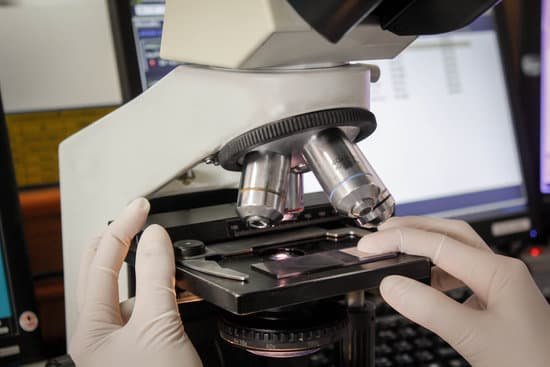Is posterior or anterior pituitary darker on microscope? The normal microscopic appearance of the pituitary gland is shown above. The anterior lobe (adenohypophysis) stains darker and the posterior lobe (neurohypophysis) stains lighter.
Is the anterior or posterior pituitary darker? There are more cells in the anterior pituitary, so it usually stains darker. While the anterior pituitary (a) is made up almost entirely of cells, the posterior pituitary (p) contains few cells and a lot of nerve cell processes–the axons of hypothalamic neurons.
How can you tell the difference between anterior and posterior pituitary? The anterior pituitary synthesizes and secretes somatotropin, prolactin, follicle stimulating hormone, luteinizing hormone, thyroid hormone, adrenocorticotropic hormone. The posterior pituitary does not synthesize hormones, it stores and releases vasopressin and oxytocin.
What color is the anterior pituitary gland? Glands with light-brown color and which exhibit spongy property are selected for extract preparation. The active principle of pituitary gland is GTH, which is glycoprotein in nature and extremely sensitive to temperature denaturation.
Is posterior or anterior pituitary darker on microscope? – Related Questions
How the compound light microscope works?
A compound light microscope has its own light source in its base. The incandescent light from the light source is reflected by a condenser lens beneath the specimen, and the light passes through the specimen, up to the objective lens, then the projector lens sends the magnified image onto the eyepiece.
What is the highest total magnification of a dissecting microscope?
A dissecting microscope is used to view three-dimensional objects and larger specimens, with a maximum magnification of 100x.
What do you see in a microscope?
A microscope is an instrument that can be used to observe small objects, even cells. The image of an object is magnified through at least one lens in the microscope. This lens bends light toward the eye and makes an object appear larger than it actually is.
What is the purpose of a stereo microscope?
A stereo microscope is used for low-magnification applications, allowing high-quality, 3D observation of subjects that are normally visible to the naked eye. In life science stereo microscope applications, this could involve the observation of insects or plant life.
How much does scanning electron microscope cost?
The price of electron microscopes can also vary by type of electron microscope. The cost of a scanning electron microscope (SEM) can range from $80,000 to $2,000,000. The cost of a transmission electron microscope (TEM) can range from $300,000 to $10,000,000.
What does a microscope enable us to do?
A microscope is an instrument that is used to magnify small objects. Some microscopes can even be used to observe an object at the cellular level, allowing scientists to see the shape of a cell, its nucleus, mitochondria, and other organelles.
Is rough endoplasmic reticulum visible under light microscope?
The detailed structure of the rough endoplasmic reticulum can’t be studied by light microscopy. However, the abundance of membrane-bound ribosomes makes areas of rER extremely basophilic and therefore visible, especially in cells that are highly secretory.
What is the specimen in a microscope?
Specimen or slide: The specimen is the object being examined. Most specimens are mounted on slides, flat rectangles of thin glass. The specimen is placed on the glass and a cover slip is placed over the specimen. This allows the slide to be easily inserted or removed from the microscope.
What do phases of a microscope do?
Phase contrast microscopy translates small changes in the phase into changes in amplitude (brightness), which are then seen as differences in image contrast. Unstained specimens that do not absorb light are known as phase objects. … This allows the specimen to be illuminated by parallel light that has been defocused.
How do cells look under a microscope?
Under a low power microscope, the cell membrane is observed as a thin line, while the cytoplasm is completely stained. The cell organelles are seen as tiny dots throughout the cytoplasm, whereas the nucleus is seen as a thick drop.
Why can’t you see viruses with a compound light microscope?
Key takeaways. The size of viruses ranges from 20 to 400 nm, which is too small to be seen with an optical microscope. The resolution limit of an optical microscope is about 0.5 – 1 µm (500 nm – 1,000 nm). Therefore, we can not see viruses under the microscope.
What is the meaning of a diaphragm on a microscope?
The microscope diaphragm, also known as the iris diaphragm, controls the amount and shape of the light that travels through the condenser lens and eventually passes through the specimen by expanding and contracting the diaphragm blades that resemble the iris of an eye.
What is microscopic anatomy?
Microscopic anatomy: The study of normal structure of an organism under the microscope. Known among medical students simply as ‘micro.
What type of organism was first viewed under a microscope?
The first man to witness a live cell under a microscope was Anton van Leeuwenhoek, who in 1674 described the algae Spirogyra. Van Leeuwenhoek probably also saw bacteria.
What does cotton look like under a microscope?
COTTON is derived from a cotton plant. The fibers appear as flat ribbons under the microscope that are slightly twisted. … Under the microscope it looks like scaly corkscrews.
What is the correct way of carrying a microscope?
Always keep your microscope covered when not in use. Always carry a microscope with both hands. Grasp the arm with one hand and place the other hand under the base for support.
Is there sound in the microscopic world?
These noises are generated by the tiny hair cells within the cochlea, in response to an exterior auditory stimulation. Sounds are occurring on the cellular level too. Scientists can measure sounds less than -30 dB from individual cells using a nano-sized optical fiber.

